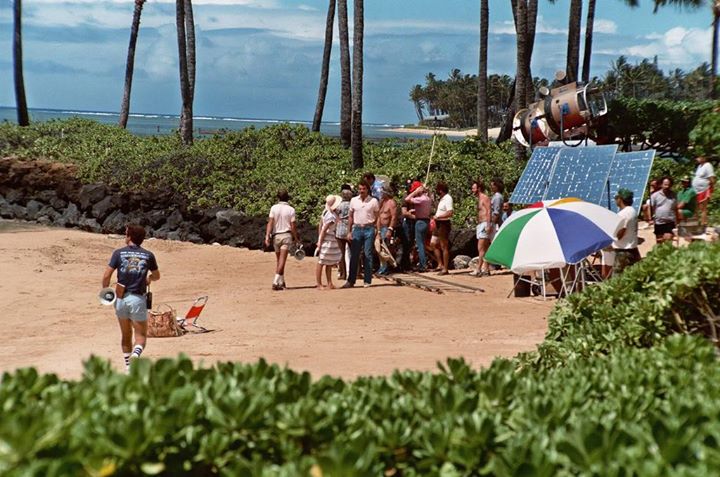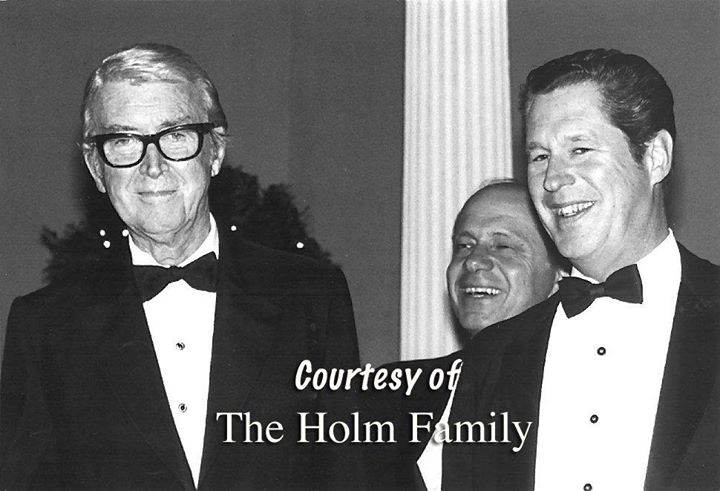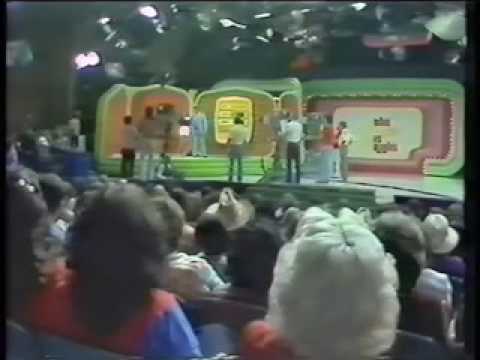Up until the mid-1970s, the networks had little interest in Saturday late-night shows. After the eleven o’clock news, the airwaves were a bone-yard for local affiliates, the final resting place for schlock movies from the 1950s and ’60s. NBC stations had the option of rerunning recent episodes of “The Tonight Show” to predictably tepid ratings, which did not please either the affiliates or Johnny Carson. When Carson pulled the weekend reruns, preferring to repackage them as “best of ” programs to air on weeknights so that he could enjoy some time off, NBC president Herbert Schlosser and vice president of late night programming Dick Ebersol tapped Lorne Michaels, a veteran of Rowan and Martin’s “Laugh-In,” to create something edgy and new.
Johnny Carson dismissed “Saturday Night” as crude and sophomoric. He was right. That he considered the jibe a debilitating argument against the show only underscores how out of step “the lonesome hero of middle America” (as a 1970 Life magazine cover proclaimed him) had become. Crude and sophomoric was exactly what Saturday Night’s demographic craved.
Conventional wisdom held that it would be ludicrous to expect the show’s target audience to sit at home watching TV at eleven thirty on a Saturday night. Michaels knew different. The audience he was after had grown up watching TV. Too much TV. It was their collective point of reference, the communal campfire around which they all gathered in the new global village. They lived and breathed TV with an ironic self-awareness that Michaels and his team used to frame the jokes within the Big Joke that would define the show and leave most Americans born before 1948 muttering to themselves and scratching their heads.
NBC’s “Saturday Night” was arguably the first television show about television. Then, as now, the show was dominated by ironic takedowns of commercials, newscasts, sitcoms, talk shows, PBS-styled cultural programming, punditry, and presidential debates. Even those skits that ventured beyond television’s domain would typically break through the fourth wall to skewer — or at least wink at — the familiar conventions of variety-show sketch comedy. Perhaps that’s why Richard’s turn as guest host proved such a sensation. His stand-up bits were a bracing blast of fresh air for a generation accustomed to peering out at the world through a peephole the size of a TV screen and snickering at what they saw. The characters Richard brought out during his solo spots that night bore little resemblance to television’s stock types. The decent guy who turns into a violent drunk on weekends, the Hennessy-quaffing cat who accepts a hit of acid at a party, the junkie-berating wino — all were renegades who rode into the medium’s gated community with news from the outside world.
That’s why Lorne Michaels had to have Richard Pryor. The show’s claims to hip edginess or even bare relevance would ring hollow without him. It’s no exaggeration to equate the back-to-back salvos of “That Nigger’s Crazy” (back in print on Warner Bros.’ Reprise label just a month earlier) and “… Is It Something I Said?” (released late in July) with Bob Dylan’s electric epiphanies of “Highway 61 Revisited” and “Blonde on Blonde.” Just as every folk singer circa 1966 scrambled to plug into that same arc welder, lower the dark glasses, and send off a wild mercurial spray of white sparks into the sky, now it seemed every club comic carried a ghetto-talking phrasebook in his back pocket, as if that were the secret to doing what Richard did. “That’s the difference between Pryor and the pretenders who use profanity just to get laughs instead of making it a part of the characters and scenes they are trying to create,” says David Brenner. “Pryor could take the same bits he did at the Comedy Store or the Improv, vacuum out all the shits and motherfuckers for TV, and be just as funny.”
With Richard as host, sufficient numbers of the alienated youth Michaels sought could be counted on to eject Pink Floyd from their eight-tracks, switch off the strobe lights, carry their bongs up from the basement, or switch over from their local UHF station’s ghoulish movie host just to see what Richard might do.
The trouble was, NBC flat-out refused to allow Richard Pryor anywhere near a live studio camera. Richard, everyone knew, was a wildly unpredictable, uncontrollable cokehead. (So was just about everyone else on the show, but Richard didn’t bother to hide it.) What was to stop him from letting loose a string of shits and motherfuckers on live TV, as he would sometimes do during rehearsal, just to mess with them?
Michaels resigned in protest. “I said, ‘I can’t do a contemporary comedy show without Richard Pryor.’ And so I walked off. There was a lot of me walking off in those days.” NBC finally relented on the condition that the broadcast be put on a ten-second delay. Michaels knew that Richard would never agree to that. It was insulting. After all, they’d let George Carlin go out live, as they had every other host (all six thus far). Richard would go apeshit if he found out they were treating him any differently. (He did and he did but not until later.) Michaels went back and forth with the network, finally agreeing to a five-second delay, as if the duration of the time lag had anything to do with it. Director Dave Wilson now says the show in fact was live. His crew couldn’t figure out how to work the delay.
Meanwhile, Michaels found just as much aggravation in closing the other end of the deal. As his scheduled week drew near, Richard was still playing hard to get. In an effort to negotiate, the producers made a junket to Miami where Richard was performing at a jai-alai arena.
Richard insisted that they hire Paul Mooney as his writer. His ex-wife, Shelley, and his new girlfriend, Kathy McKee, both had to be on the show. And he wanted tickets. Lots and lots of tickets. Enough to pack the studio audience with friends and family. Associate producer Craig Kellem says, “Lorne loved Richard. He thought he was quote-unquote the funniest man on the planet.” But it was tough going. “As wonderful and as adorable as he was, it was also very tense being around him. It took so much work and effort to go through this process of booking him that Lorne, in a moment of extreme stress, sort of candidly looked around and said, ‘He better be funny.’ ”
Herb Sargent and Craig Kellem arrived at Richard’s Park Avenue hotel room the week of the show and found him in a foul mood. He was pissed because the network people had subjected Mooney to a condescending “job interview” — more like a parole-board hearing — before they would agree to hire him on for the show, which, of course, everyone knew they were going to do anyway because that’s what Richard wanted.
Richard had questions they couldn’t answer. Things got tense. Richard wanted to see a script. But there was no script. The staff was still in recovery mode from the previous week’s show. Richard threatened to walk, but Sargent beat him to it. Kellem watched speechless as Sargent hopped up and made for the door saying he’d just dash over to the office and get the script. He never came back.
When they weren’t working on the show, Richard and Kathy McKee enjoyed their time together in New York. They saw Aretha Franklin at the Apollo and visited Miles Davis in the hospital. (In his opening monologue, Richard dedicated the show to Miles.) But Richard never told Kathy that Shelley was going to be on the show, too. “I’m with Richard,” she says. “I’m his girlfriend, I’m traveling with him. You might think, when we got on the plane to New York, he would look over at me and say, ‘Oh, by the way, Kathy, Shelley’s going to be there.’ Nope. Not a word. I never found out until I got to rehearsal.
“Richard didn’t know how to manage his women the way Sammy [Davis Jr.] did,” McKee explains. “Sammy Davis was a master at bringing his women together. Richard didn’t know how to do that. He couldn’t swing. He couldn’t bring Deborah and me or Pam Grier together. It always ended up being trouble for him. So we were kept separate.”
It may have been that Richard still had feelings for Shelley and wanted to give her acting career a boost. Penelope Spheeris suggests the more likely scenario of a quid pro quo arrangement to make some of his child-support issues go away. Introduced as Shelley Pryor, she performed one of her poems, an interracial allegory of two differently colored carousel horses that brave society’s scorn when they fall in love.
Chevy Chase kept dogging Mooney all week to write something for him and Richard to do together. Just as Michaels needed Richard to establish his show’s bona fides, Chevy needed airtime with him. Everybody else had a skit with Richard. He and John Belushi faced off as samurai hotel clerks; Jane Curtin interviewed him as an author who lightened his skin to see what life is like for a white man; Laraine Newman, as the devil-possessed Regan in a take-off on “The Exorcist,” threw a bowl of pea soup in his face; Dan Aykroyd debriefed him as a special-ops major; Garrett Morris, claiming that he was acting on Richard’s request, did Chevy’s trademark pratfall to open the show; and Gilda Radner, in a running gag throughout the show, repeatedly picked him out of police lineups. But Chevy had nothing. He kept sending emissaries to Mooney asking, “Could you please write something for Chevy and Richard?”
Paul Mooney recalls the genesis of the skit that critics and viewers alike continue to rank among the best ever in the history of “Saturday Night Live:”
Toward the end of the week, as the Saturday show time approaches, he starts following me around himself, like a lamb after Bo Peep. “Richard hates me, doesn’t he?” Chevy asks me. “He doesn’t hate you,” I say, even though I know Richard does indeed despise Chevy.
Soon enough he’s back tugging on my sleeve. “Write something for us, will you?” he pleads. “I have to get some air time with Richard.”
Finally, in the early afternoon on Thursday, I hand Lorne a sheet of paper.
“What’s this?” “You’ve all been asking me to put Chevy and Richard together,” I say. After all the bullshit I’ve been put through to get here, the fucking cross-examination Lorne subjects me to, I decide to do a job interview of my own. Chevy’s the boss, interviewing Richard for a janitor’s job. The white personnel interviewer suggests they do some word association, so he can test if the black man’s fit to employ.
The first words are innocuous enough. Chase says “dog.” Richard says “tree.” Fast/slow, rain/snow, white/black, bean/pod, then:
Negro.
Whitey.Tarbaby.
What’d you say?Tarbaby.
Ofay.Colored.
Redneck.Junglebunny.
(bringing it) Peckerwood!Burrhead.
Cracker.Spearchucker.
White trash.Junglebunny.
Honky.Spade.
Honky honky!Nigger!
Dead honky!
As they wait for the long wave of laughter and applause to subside, Richard’s face begins to spasm, his nose twitching like a maniacal rabbit. His character gets the job at three times the offered salary, plus two weeks’ vacation up front. “Just don’t hurt me,” Mooney has Chevy say.
“It’s like an H-bomb that Richard and I toss into America’s consciousness,” Mooney wrote. “All that shit going on behind closed doors is now out in the open. There’s no putting the genie back in the bottle. The N-word as a weapon, turned back against those who use it, has been born on national TV.”
It was, Mooney says, the easiest bit he ever wrote. All he had done was spell out what had been going on beneath the surface of his “job interview” with Lorne Michaels and the NBC execs.
Just as Michaels had hoped, Richard’s appearance lifted “Saturday Night” out of the programming ghetto and established it as a cultural phenomenon. Two weeks later, Chevy Chase made the cover of New York magazine, which dubbed him “the funniest man in America” and quoted an unnamed network executive championing him as “the first real potential successor to Johnny Carson,” and predicting he’d be guest-hosting Tonight within six months.
Carson, understandably, offered a less-than-glowing assessment of Chevy’s skills. “He couldn’t ad-lib a fart after a baked-bean dinner.”






